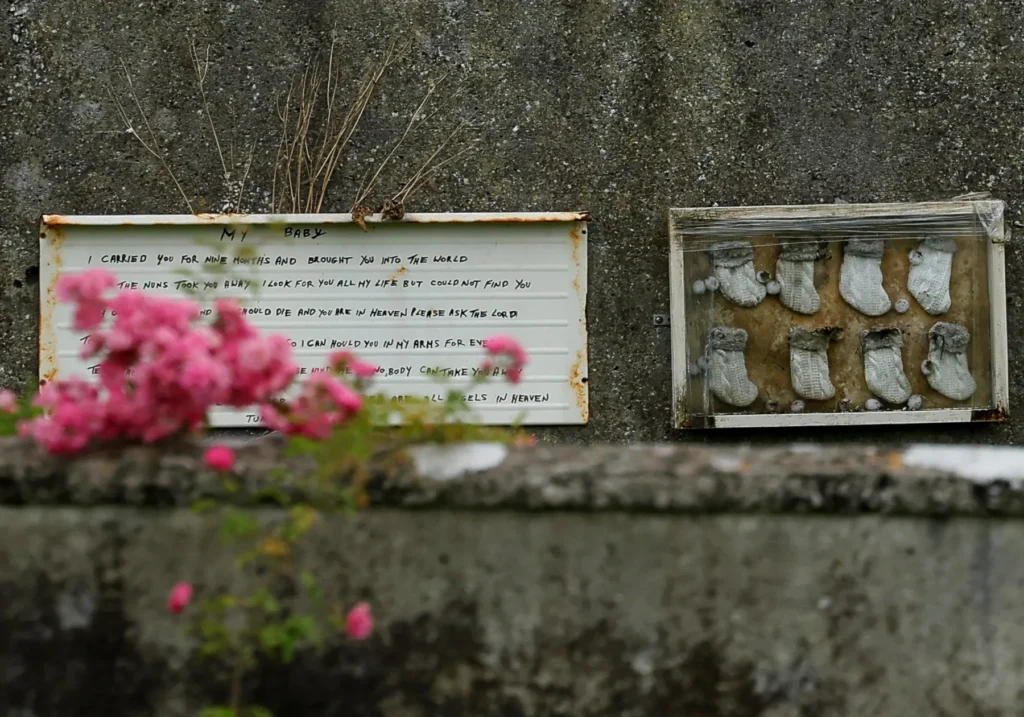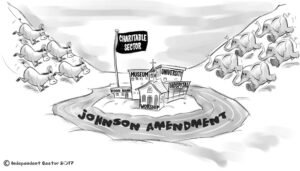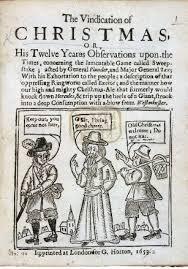Unearthing the Truth: Excavation at the Former Bon Secours Mother and Baby Home in Tuam, County Galway

Excavation at the Former Bon Secours
Introduction to the Bon Secours Mother and Baby Home
The Bon Secours Mother and Baby Home, located in Tuam, County Galway, was a significant establishment that operated between 1925 and 1961. It was part of a broader network of similar institutions throughout Ireland, dedicated to housing unwed mothers and their children during a time marked by severe social stigmatization. The primary aim of these homes was to provide sanctuary for women deemed to have fallen from grace by societal standards, offering them a semblance of shelter and assistance in an otherwise hostile environment.
The home primarily served unwed mothers, many of whom found themselves ostracized due to the prevailing norms regarding motherhood and sexuality in early 20th-century Ireland. The confluence of Catholic doctrine and societal expectations fostered an environment rife with stigma, compelling many women to seek refuge in these institutions. Young women often faced significant pressure to retreat from the public eye, and the Mother and Baby Home offered a hidden respite, albeit one fraught with its own challenges and hardships.
Within this context, the Bon Secours Mother and Baby Home provided various services that included prenatal care, childbirth assistance, and early childcare. However, the conditions under which these services were delivered have come under intense scrutiny in recent years. Reports of neglect and maltreatment have surfaced, suggesting that the home, rather than being a sanctuary, often perpetuated further hardship for its residents. This environment reflected the complex interplay of care and control, as many women were subject to strict regulations regarding their behavior and interactions, further entrenching the stigma surrounding unwed motherhood.
Overall, the history of the Bon Secours Mother and Baby Home serves as a poignant reminder of the broader societal attitudes toward unwed mothers in Ireland during this tumultuous period. It encapsulates not only the struggles of the women involved but also the prevailing ideologies that shaped their experiences.
The Controversies Surrounding the Bon Secours Mother and Baby Home
The Bon Secours Mother and Baby Home in Tuam, County Galway, has been at the center of numerous controversies since its establishment in the 1920s. This institution was intended to provide shelter for unwed mothers and their infants; however, the lived experiences within the home have drawn significant scrutiny. Reports from former residents and social workers reveal widespread neglect that mothers and babies faced, notably in terms of inadequate medical care, insufficient nutrition, and a lack of emotional support. The conditions experienced by these vulnerable populations have raised critical ethical questions regarding the treatment of women and children during this period.
One of the most horrifying aspects surrounding the Bon Secours establishment is the high mortality rate of infants. Investigations into the home have revealed that many children died due to malnutrition, untreated illnesses, and other preventable causes. Furthermore, there are allegations that these deaths were often undocumented, with records purportedly manipulated to conceal the true extent of the tragedy. The absence of proper burial practices has also been a focal point of contention. Unmarked graves were discovered on-site, leading to public outcry and a demand for accountability regarding the final resting places of these children.
The controversies do not stop at the Tuam home; they reflect broader systemic issues encountered by similar institutions across Ireland. Numerous mothers and their babies faced similar treatment, prompting several investigations into the practices of these homes. Reports from government inquiries acknowledged the physical and emotional toll imposed on women, who were often stigmatized and marginalized in society. The unfolding of these allegations has shed light on a dark chapter in Irish history, prompting a societal reckoning with the legacy of such institutions. As these controversies come to the forefront, the quest for truth and acknowledgment continues, highlighting the need for justice and healing for those affected.
The Excavation Process Begins
The excavation process at the former Bon Secours Mother and Baby Home in Tuam, County Galway, has marked a pivotal moment in addressing the historical injustices associated with the institution. This initiative is primarily motivated by the search for unmarked graves believed to lie within the grounds, a quest underscored by community appeals and historical studies. The excavation aims to provide closure for families who have long sought answers regarding the whereabouts of their loved ones, shedding light on a dark chapter of Ireland’s past.
The excavation is being led by a specialized archaeological team with extensive experience in sensitive site investigations. This team comprises experts from various fields, including archaeology, forensic science, and history, ensuring that the approach is comprehensive and respectful. Adhering to the highest standards of archaeological rigor is essential; this not only facilitates the search for unmarked graves but also ensures the ethical treatment of any human remains that may be uncovered. Such an approach underscores the significance of employing meticulous methods to preserve the dignity of those who are being studied during this excavation process.
The methodology employed includes geophysical surveys to identify potential burial sites before the actual excavation begins. Techniques such as ground-penetrating radar and resistivity surveys are crucial in mapping the site effectively, allowing the team to focus their efforts on the most promising areas for investigation. The expected duration of the excavation is estimated to be several months, depending on the findings and the conditions encountered during the digging process. It is a delicate endeavor, one that demands patience, respect, and thoroughness throughout the unfolding investigation.
Key Findings from the Excavation Site
Recent excavations at the former Bon Secours Mother and Baby Home in Tuam, County Galway have yielded significant findings that contribute to our understanding of the lives of mothers and their infants at this site. Ground-penetrating radar surveys conducted before the dig revealed anomalies in the ground, suggesting the presence of unmarked graves. As the excavation progressed, archaeologists uncovered evidence of burial sites, which has attracted considerable attention and raised ethical questions about the treatment of vulnerable women and children.
The initial findings included the discovery of human remains, alongside a variety of artifacts such as clothing fragments, personal items, and remains of a significant number of infant coffins. These discoveries indicate a troubling history regarding the care and disposition of those who resided within the institution. The remains of the infants point to the high mortality rate within the facility, shedding light on a period when many children tragically did not survive infancy. These revelations are pivotal in understanding not just the history of the home, but also the broader societal attitudes towards unwed mothers and their children during that era.
Moreover, this excavation has sparked public interest and discussions around the historical treatment of women and children in Ireland. Families are now seeking closure as they search for answers regarding their lost relatives. The excavation team is meticulously documenting every find to ensure a comprehensive understanding of the burial practices and living conditions faced by the residents at Bon Secours. Each new discovery from the excavation adds vital context to the narratives of the mothers and babies, striving to honor their experiences and highlight the need for transparency regarding such historical injustices. As work continues, it is anticipated that further findings will provide additional insights into this significant chapter of Irish history.
Public Reaction and Community Impact
The excavation at the former Bon Secours Mother and Baby Home in Tuam has sparked a significant public reaction, highlighting the complex emotions experienced by the community and beyond. For many survivors of the institution, the excavation represents a painful yet necessary step towards acknowledgment and justice. Voices from within the local community range from expressions of sorrow to feelings of closure. The excavation process facilitates a crucial dialogue about the historical treatment of mothers and children in Ireland, revealing deep scars that linger in societal memory.
Local residents have witnessed the excavation’s emergence as a catalyst for conversations about the past. While some view the recovery of remains as a path toward reconciliation and healing, others grapple with the lingering trauma associated with the Mother and Baby Home. Survivors, many of whom have campaigned tirelessly for recognition, report mixed emotions. They feel a sense of validation that their stories are finally being unearthed, yet they also experience sorrow as the excavated remains add weight to historical injustices that occurred behind closed doors.
The wider community in Tuam recognizes the excavation not only as an act of remembrance but also as an opportunity for reflective discourse on societal values and historical accountability. This excavation transcends local significance; it has become part of a national narrative concerning the treatment of vulnerable populations, particularly unwed mothers and their children. Advocates for survivors underscore the importance of ensuring that the excavation leads to meaningful reforms in how society addresses past injustices. Public awareness has grown, with calls for comprehensive investigations into similar institutions across the country, emphasizing the necessity for recognition and reparative actions.
While the excavation proceeds, the emotional and societal impacts of this event will be felt for years to come, reminding us of the imperative to engage in honest discussions about Ireland’s shared history.
Legal and Ethical Considerations
The excavation of burial sites, such as that at the former Bon Secours Mother and Baby Home in Tuam, raises significant legal and ethical questions that must be thoroughly considered. Firstly, permissions from appropriate authorities are paramount. In Ireland, any excavation of human remains typically requires a license under the Burials Act, necessitating compliance with specific regulations, including notifying the local authority and relevant community groups. Obtaining these permissions ensures that the excavation adheres to legal standards and the rights of the deceased and their families are respected.
Furthermore, the excavation process must take into account the emotional and psychological impact on families of individuals buried at the site. Many relatives may be seeking closure regarding their loved ones, and it is essential for excavation teams to handle remains with dignity and respect. This includes using forensically trained professionals who can ensure that the process is carried out sensitively. Communication with families and survivors throughout the excavation is vital, as it helps to acknowledge their grief and provide them with necessary information regarding the findings.
There are also potential legal ramifications arising from the discoveries made during excavation. If human remains are uncovered, this may lead to investigations into historical child welfare practices and the legal accountability of institutions involved. Additionally, unearthing evidence of past wrongdoings might open the door for legal claims from families seeking justice or reparations for their losses. The complexity of these matters requires careful navigation to balance legal obligations with the ethical imperative to honor and respect those who have passed, as well as their families.
Broader Implications for Irish Society
The excavation at the former Bon Secours Mother and Baby Home in Tuam, County Galway, serves as a critical juncture for reflecting on the broader implications for Irish society. As more evidence of the inhumane treatment faced by mothers and their children during this period comes to light, it fosters a necessary dialogue centered on healing and reconciliation within communities profoundly affected by the legacies of such institutions. The painful history associated with the Bon Secours Home encapsulates a broader narrative of neglect and suffering that many families experienced, establishing a pressing need for communal reflection and dialogue.
Uncovering the past allows society to engage with its history honestly, creating opportunities for collective mourning and remembrance. Acknowledging the experiences of those who suffered is crucial for communities striving to heal. The excavation signifies not just an archaeological endeavor but a societal commitment to confronting uncomfortable truths. This process can pave the way for individual and communal healing, particularly for those still grappling with the trauma associated with similar institutions that are emblematic of a historical denial of dignity and respect.
Moreover, the uncovering of such truths raises important questions about accountability and justice in contemporary Ireland. As public awareness grows, there is an increasing demand for legislative reforms aimed at addressing historical injustices. Society is called upon to not only remember those who suffered but also enact significant changes to ensure that similar injustices are never repeated. The discourse surrounding the excavation reinforces the necessity of integrating human rights perspectives into current legislation, as the ramifications of the past continue to shape the present, informing discussions about accountability in institutional care.
Future Steps After the Excavation
Following the excavation at the former Bon Secours Mother and Baby Home in Tuam, County Galway, a series of critical steps will be essential for addressing the findings uncovered during this significant investigation. As the excavation process concludes, the immediate focus will turn to the respectful treatment of any remains discovered. Authorities and relevant organizations must collaborate to determine a suitable methodology for handling these remains, ensuring that all actions exhibit the highest level of dignity and respect for those who lost their lives. Furthermore, comprehensive plans should be established to decide the final resting place for these remains, whether that involves reburial at the site or another appropriate location.
Documentation of the findings is equally vital. Historians, archaeologists, and researchers should work collaboratively to record the data derived from the excavation. This information must be meticulously cataloged to ensure accurate representation for future research and public knowledge. By publishing the results in accessible formats, it allows for a greater understanding of the history surrounding the Mother and Baby Home not only in local contexts but also on a national level.
Additionally, the involvement of historians and archaeologists will be indispensable in interpreting the findings. They will provide insights into the historical, social, and cultural significance of the events associated with the home. Their analysis will aid in understanding the broader implications of the home’s legacy, ultimately contributing to national healing and reconciliation efforts. It is essential to commemorate the lives affected by the home through dedicated memorials or educational initiatives, ensuring that the stories of those who endured hardships are not forgotten. These steps will be pivotal in fostering understanding and reflection within society as we process this dark chapter of history.
Conclusion: A Step Towards Healing and Remembrance
The excavation at the former Bon Secours Mother and Baby Home in Tuam, County Galway, serves as a poignant reminder of the necessity for truth-telling in the face of historical trauma. This initiative highlights a significant moment not only for the survivors and the families affected but also for the broader community, as it delves into a past marked by neglect and silence. By addressing these issues, the excavation promotes recognition of the pain endured by many, fostering an environment where these once-silenced narratives can be heard and validated.
Historical trauma, particularly experienced by vulnerable populations in institutions such as the Bon Secours Mother and Baby Home, calls for collective acknowledgment. This excavation brings to light the sufferings that occurred within its walls, allowing society to reflect on the injustices faced by mothers and their children. The process of excavation itself becomes emblematic of a larger effort to uncover buried truths—both literally and metaphorically—that have long been suppressed. It is a step aimed at understanding the depths of this historical narrative and paving the way toward healing.
As communities engage with these histories, the emphasis on remembrance cannot be overstated. It is crucial that the memories of those who suffered are honored and integrated into the historical consciousness of Ireland. Such recognition not only facilitates individual healing but also strengthens collective identity and resilience. As society grapples with the ramifications of the past, the importance of maintaining dialogue around these issues becomes ever more apparent. Ultimately, the excavation is just one step in a long journey toward recognition, truth, and hope for future generations, encouraging engagement with the difficult truths of history in pursuit of a more compassionate society.









Leave a Reply
You must be logged in to post a comment.